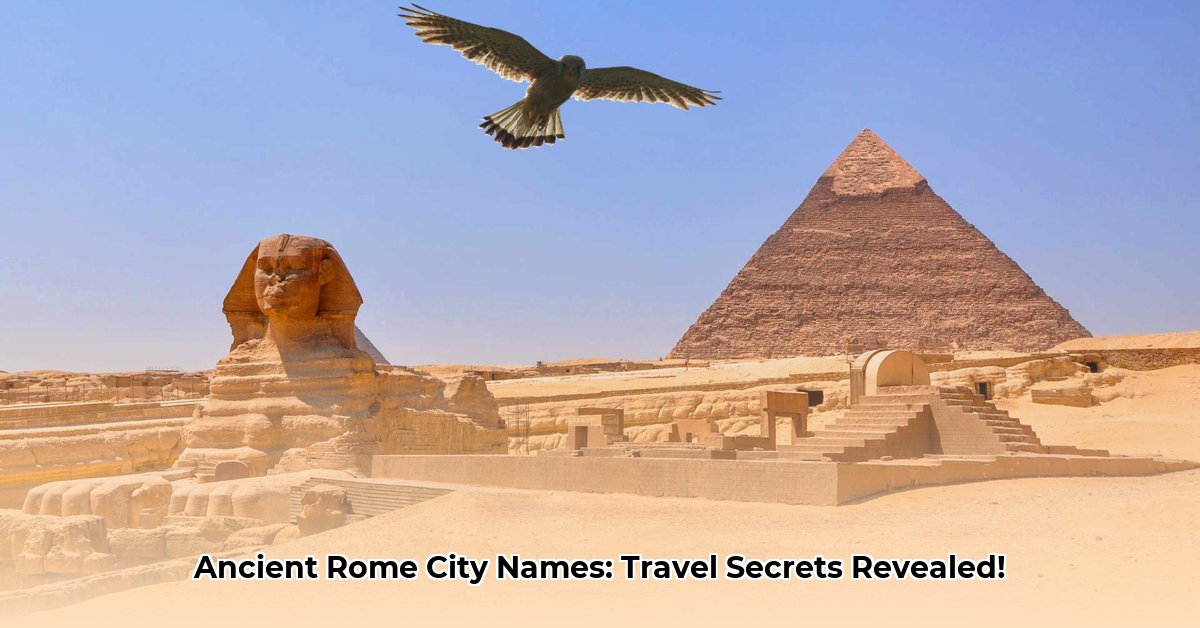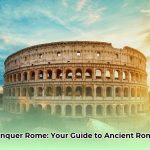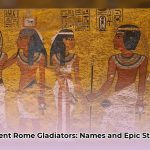Ever strolled through an ancient European city and felt a profound connection to the past? You might be traversing streets first systematically laid out by the Romans. These ancient Rome city names, whispered on the wind or etched into crumbling stone, are not merely labels; they are enduring echoes of a powerful civilization that profoundly shaped the world we know today, subtly influencing our urban landscapes, legal systems, and even our languages.
Imagine the Roman Empire not just as a static map in a history book, but as a vast, pulsating network of interconnected cities. Each served as a vital organ, pumping life, culture, commerce, and power into the surrounding lands. These were no accidental settlements; they were meticulously planned and strategically placed hubs, designed for maximum impact and the efficient spread of Roman influence. What’s truly remarkable is that many of these ancient sites are still thriving metropolises today, with a staggering 92% of Roman foundation sites showing continuous habitation, a testament to their foresight and the enduring quality of their design.
The Master Plan: Unpacking Roman City Design and Strategic Foundations
The Romans were unparalleled master strategists, and their sophisticated city planning brilliantly reflected this acumen. They did not simply haphazardly establish settlements. Instead, they carefully considered a multitude of factors to ensure long-term viability, control, and prosperity:
- Trade Routes: Cities were often positioned along major rivers, strategic coastlines, or at the intersections of vital overland roads, facilitating seamless commerce and the rapid exchange of goods, ideas, and military personnel across the vast empire.
- Defense: Elevated hilltops, natural barriers, and easily fortifiable locations were consistently preferred for military outposts (castra), which frequently evolved into larger, civilian urban centers, ensuring robust security against external threats. These fortifications were often the genesis of what would become a bustling city.
- Resources: Reliable access to abundant fresh water, fertile agricultural land for sustenance, and readily available building materials (such as stone, timber, and clay) was paramount for a city’s sustainability, growth, and the support of a burgeoning population.
- Governance: Central locations within a newly conquered or existing province were chosen for efficient administration, allowing Rome to exert swift control, collect taxes, and maintain social order across its diverse territories.
Many Roman cities, in fact, originated as these military camps. As these camps provided security and attracted merchants, artisans, and other settlers seeking opportunities, they naturally burgeoned into vibrant urban centers, demonstrating an organic yet planned process of city development that prioritized function and longevity.
Understanding how these defensive strategies played out is key to appreciating the architectural ingenuity of the era, and you can further explore these aspects of Roman architecture secrets to uncover more about their city planning prowess.
The Roman Urban Blueprint: A Template for Enduring Life
What did a typical Roman city actually look like? While variations certainly existed based on geography, local culture, and historical period, certain core elements were remarkably consistent, forming a standardized Roman urban planning starter pack:
- Grid-like Street Layouts: The hallmark of Roman urbanism was its orderly grid pattern. Straight streets, often intersecting at precise right angles, made navigation intuitive and facilitated efficient movement of people and goods. The two main thoroughfares, the cardo (running north-south) and the decumanus (running east-west), typically intersected at the city’s heart, a design principle that continues to influence urban planning worldwide.
- The Forum: This expansive central public square was the pulsating heart of every Roman city. Surrounded by vital public buildings—temples dedicated to various deities, basilicas for legal and commercial proceedings, and government offices—the forum was where citizens gathered for political discourse, religious ceremonies, market transactions, and social interaction. It was the civic, religious, and economic nexus.
- Aqueducts: These magnificent feats of engineering were crucial for Roman urban life, bringing vast quantities of fresh, clean water from distant sources into the cities. This reliable water supply enabled larger, healthier populations, supported public amenities like baths, and greatly improved overall sanitation, showcasing Roman ingenuity and advanced hydraulic engineering.
- Public Baths (Thermae): Far more than just places for personal hygiene, Roman baths were elaborate social and recreational complexes. They often included hot, warm, and cold pools, saunas, exercise grounds (palaestrae), libraries, and massage rooms. They served as vital community hubs where people of all social strata could relax, socialize, exercise, and discuss current events, embodying the Roman emphasis on public well-being and leisure.
- Theatres and Amphitheaters: These grand structures were integral to Roman social life. Theatres hosted plays and musical performances, while the larger, typically oval-shaped amphitheaters were used for spectacles such as gladiator combats, animal hunts, and public executions. These venues served as powerful tools for cultural dissemination and entertainment, reinforcing Roman identity.
- Roads and Infrastructure: Roman roads were famed for their durability and efficiency, forming an intricate network that connected cities across the entire empire, facilitating rapid communication and military deployment. Beyond roads, advanced sewer systems, public latrines, and sophisticated drainage systems were standard in Roman cities, demonstrating a commitment to public health far ahead of their time.
- Walls and Gates: For defense and control, most Roman cities were encircled by substantial walls, often punctuated by imposing gates that allowed controlled access and served as symbolic entrances to the urban space. These fortified perimeters offered protection and defined the city’s boundaries.
These architectural and planning features were not merely practical; they were meticulously designed to promote and reinforce Roman values, culture, and way of life. This comprehensive blueprint profoundly influenced the subsequent development of cities far beyond the empire’s borders, with its effects still observable today, forming the fundamental foundations of much modern urban design.
Pillars of Empire: Key Cities and Their Enduring Stories
While Rome itself was unquestionably the capital and most important metropolis, the sprawling Empire functioned effectively only through a vast, interconnected network of other pivotal cities. Each played a crucial role in maintaining stability, facilitating trade, and spreading Roman culture. Here are a few major players, showcasing the diverse ways in which they contributed to the grandeur of Rome:
- Rome (Roma): The quintessential Eternal City, Rome was the undisputed center of the Roman world, the seat of imperial power, and a potent symbol of Roman grandeur. Its strategic location on the Tiber River and close proximity to the Mediterranean Sea provided excellent access for trade and military expansion. As the heart of government, entertainment, and society, its ruins like the Colosseum, Pantheon, and Roman Forum continue to awe visitors, standing as monumental testaments to its thousand-year prominence.
- Constantinople (Istanbul): Originally the Greek city of Byzantium, this strategic hub was dramatically rebuilt and refounded by Emperor Constantine in 330 AD as his “New Rome.” It became the capital of the Eastern Roman (Byzantine) Empire and an indispensable center for trade and culture, serving as a gateway between Europe and Asia. Its location on both the Silk and Spice Roads ensured immense wealth and influence, and it remained a formidable imperial capital for over a millennium after the fall of the Western Empire.
- Antioch (Antakya, Turkey): Located on the Orontes River in modern-day Turkey, Antioch was the capital of the Roman province of Syria and the third-largest city in the Roman Empire. Its prime location near major trade routes, including the vital spice trade, made it a crucial commercial and administrative hub. It was also one of the earliest centers of Christianity, where followers of Jesus were first called “Christians.” Remnants of its temples, theaters, aqueducts, and baths still speak of its past splendor.
- Alexandria (Egypt): Founded by Alexander the Great, Alexandria was an intellectual powerhouse and one of the largest cities in the Roman Empire, second only to Rome itself. Renowned for its Great Library and the Lighthouse of Pharos, it attracted scholars, mathematicians, and philosophers, becoming a beacon of learning and trade. Though many of its ancient ruins now lie beneath the waves, its legacy as a center of knowledge endures.
- Carthage (Tunisia): A formidable rival to Rome during the Punic Wars, Carthage was utterly devastated before being rebuilt as a Roman city due to its critical strategic position on the northern coast of Africa. It became a vital port and agricultural hub, feeding Rome with its produce. Ruins of amphitheaters, baths, and opulent villas still dot the landscape, showcasing its Roman rebirth.
- Mediolanum (Milan, Italy): For a significant period, Milan served as the capital of the Western Roman Empire. Its location on the fringes of the empire allowed emperors direct control over the military and provided a strong defensive position against Gallic threats. It was also the seat of power for figures like St. Ambrose, whose influence allowed him to openly challenge imperial decisions, highlighting the city’s unique political weight.
- Londinium (London, UK): Founded in 43 AD, Londinium quickly grew from a military outpost into the capital of Roman Britain and a major commercial port on the River Thames. It was a crucial passage point for trade goods moving further north into Britain. Today’s London still reveals remnants of its Roman past, with excavations continually unearthing fascinating artifacts.
- Eboracum (York, UK): Established as a major military fortress in 71 AD, Eboracum in northern Britain evolved into a significant civic center. Its role as a stronghold underscored Rome’s strategic need to control its northern territories and manage the frontier with indigenous tribes.
- Colonia Agrippina (Cologne, Germany): Founded in 50 AD, this city on the Rhine River became a major trading center due to its strategic riverine location. An extensive harbor and robust road network solidified its importance as a key economic hub in Germania Inferior, leveraging geography for prosperity.
Each of these cities, and many others, played a crucial role in the grand scheme of Roman dominance, serving as vital centers for trade, administration, military control, and cultural exchange. They functioned as regional capitals, each contributing significantly to the overall strength, stability, and enduring Roman influence visible through their archaeological sites and modern urban layouts.
Names That Echo Through Time: The Etymological Journey
One of the most captivating aspects of ancient Rome city names is how they have evolved over millennia, reflecting profound linguistic shifts, cultural assimilation, and the passage of empires. Uncovering these name origins is like deciphering a hidden code, where each name holds a unique clue to the city’s past, its founding, and its subsequent etymology.
A prime example is the “-chester” or “-cester” suffix common in many British city names (e.g., Manchester, Chester, Leicester, Gloucester). This is a direct linguistic inheritance from the Latin word castrum, meaning “fort” or “military encampment.” This suffix serves as a pervasive linguistic reminder of the ubiquitous Roman military presence in Britannia and how these forts often became the nuclei of future towns.
Let’s delve into more examples of how Roman names transformed into their modern counterparts:
| Roman Name | Modern Name | Meaning & Evolution |
|---|---|---|
| Londinium | London, UK | The precise origin is debated, possibly pre-Roman Celtic (e.g., from Llyndon meaning “lake fort” or Londinion meaning “place of the bold one”). The Romans adopted and Latinized an existing name, solidifying its place as a major commercial Roman settlement. |
| Colonia Agrippina | Cologne (Köln), Germany | Meaning “Colony of Agrippina,” named after Agrippina the Younger, wife of Emperor Claudius. “Colonia” signifies its status as a Roman colony, a settlement of Roman citizens, emphasizing its direct imperial connection. |
| Lutetia Parisiorum | Paris, France | “Lutetia” likely derives from a Celtic root meaning “mud” or “swamp” (luto-) referencing the city’s original location on an island in the Seine. The “Parisiorum” refers to the local Celtic tribe, the Parisii, whose name later became synonymous with the city. |
| Augusta Treverorum | Trier, Germany | Named in honor of Emperor Augustus and the Treveri tribe. It literally means “Augusta of the Treveri,” highlighting its imperial patronage and connection to the local populace. It became one of the largest Roman cities north of the Alps and a significant imperial residence, a clear example of Romanization through urban development. |
| Emerita Augusta | Mérida, Spain | Founded by veterans (emeriti) of the Roman army, dismissed after service, under Emperor Augustus. It became the capital of the Roman province of Lusitania (encompassing modern-day Portugal and parts of Spain), proudly associating its origins with the emperor and the strength of the legions. |
| Barcino | Barcelona, Spain | The origins are uncertain, potentially from Iberian or Phoenician roots. It was formalized as “Colonia Faventia Julia Augusta Pia Barcino” under Roman rule. Its strategic layout and defensive walls reflected classic Roman urban planning. |
| Hispalis | Seville, Spain | Believed to derive from a Phoenician word meaning “flat land” (Spal), later Romanized. It flourished as a cultural and economic hub in the Roman province of Hispania Baetica, demonstrating the Romans’ ability to integrate and enhance existing settlements. |
| Arelate | Arles, France | Possibly from a Celtic term for “marshy place” near a lake or river. Became “Colonia Julia Paterna Arelatensium Sextanorum” under Caesar, showing a common pattern of assigning Roman veteran colonists. |
| Lugdunum | Lyon, France | A Latinized form of a Celtic name, likely meaning “fortress of Lugus” (a Celtic deity) or “crows hill.” Founded as a Roman colony and served as the capital of Gallia Lugdunensis, becoming a major administrative and economic hub in Gaul. |
| Aquae Sulis | Bath, UK | Literally “Waters of Sulis,” named after the local Celtic goddess Sulis, whom the Romans equated with Minerva. It was famous for its natural hot springs and elaborate Roman baths, showcasing Roman adoption of local deities and the development of spa towns. |
Exploring Roman City Names Today: A Traveler’s and Historian’s Guide
Ready to embark on your own Roman adventure and peel back the layers of history? Here’s how you can explore the enduring legacy of ancient Rome city names and experience Roman history firsthand:
- Plan Your Trip Strategically: Begin by researching cities with significant, well-preserved Roman ruins. Rome, Pompeii, and Ephesus are iconic choices, but don’t overlook lesser-known yet equally fascinating sites like Mérida in Spain (Emerita Augusta), Trier in Germany (Augusta Treverorum), Leptis Magna in Libya, or Arles in France (Arelate). Consider the historical context to understand their unique significance.
- Wander Through Archaeological Sites: Immerse yourself by walking through the silent ruins of forums, grand bathhouses, towering amphitheaters, and solemn temples. Allow yourself to imagine life in a bustling Roman city: the sounds of merchants hawking their wares, the vibrant discussions in the forum, the splash of water in the baths, and the roar of the crowd during gladiatorial spectacles.
- Visit Local Museums: Delve deeper into the specific local history by visiting museums that showcase Roman artifacts, mosaics, sculptures, and daily objects unearthed from the city. These provide invaluable context and intimate insights into the lives of the people who inhabited these remarkable urban centers.
- Learn Basic Latin or Etymology: Even a rudimentary understanding of Latin can profoundly enrich your appreciation of Roman inscriptions, official titles, and the origins of many city names. Knowing key terms like castrum, colonia, or aqua can unlock deeper meanings. Exploring the etymology of modern place names can often reveal surprising Roman connections.
- Utilize Interactive Digital Resources: Leverage online maps, virtual tours, and specialized historical databases to visualize the Roman Empire’s vast extent and explore the precise locations of its major cities. Many reputable websites offer detailed information, historical reconstructions, and interactive features that can greatly enhance your understanding before and during your visit.
- Seek Out Roman Engineering: Look for remnants of Roman engineering beyond just the famous ruins. Are there still Roman bridges in use? Sections of Roman roads? Pay attention to the underlying grid of older city centers—that’s the timeless Roman hand at work.
The Roman Influence: Weighing the Pros and Cons for Modern Urban Development
Adopting aspects of Roman city strategy, planning, and infrastructure in modern urban development presents both compelling advantages and notable disadvantages, offering valuable lessons for contemporary challenges:
| Feature | Pros (Advantages for Modern Development) | Cons (Disadvantages/Challenges for Modern Development) |
|---|---|---|
| Strategic City Planning | + Enhanced Trade and Economic Growth: Strategically placed cities along transport arteries (rivers, coasts, roads) foster efficient commerce, connecting regions and boosting economic prosperity, much like modern logistics hubs. + Efficient Resource Distribution: |










